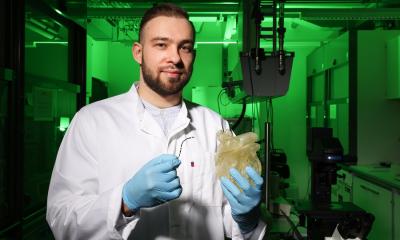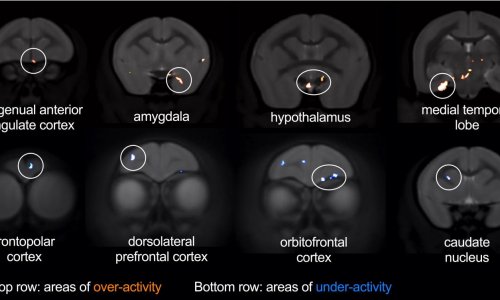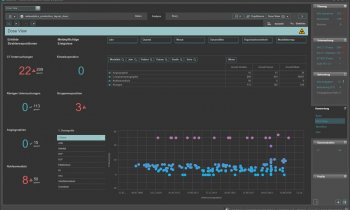Research
Seeking radiological routes to cure cardiac diseases
Radiotherapy is being proposed to treat heart diseases, specifically for hypertension and atrial fibrillation (AF).

Attendees at the annual meeting of the American Association of Physics in Medicine (AAPM), held in Austin, Texas, learned this about current and on-going research. The impact of this potential treatment could be huge. Atrial fibrillation affects more than 4.5 million Europeans and more than 2.5 million North Americans. About one third of the adult population in many countries have hypertension. Uncontrolled hypertension substantially increases the risk of ischaemic stroke, ischaemic heart disease, and kidney failure. About 25% of patients do not respond to standard therapy.
Stereotactic radiotherapy for renal sympathetic ablation
Peter G Maxim PhD, assistant professor of radiation oncology at Stanford University School of Medicine & Cancer Institute, reported that the use of stereotactic radiotherapy delivered to the renal sympathetic plexus of swine has been safe and effective in reducing hypertension. Maxim, and his colleagues at the institute, hope to have a safety study approved by fall or winter 2014 to test this treatment with a small group of very high risk patients with refractory hypertension for whom medication has not worked.
‘A huge body of evidence has demonstrated that kidney-brain connection to nerve communications plays a major role in controlling hypertension. The kidneys are responsible for creating and sustaining high blood pressure. Previous studies have shown that if the renal nerves are ablated – through surgical removal or damage to them – it is potentially possible to control high blood pressure,’ he said in a media teleconference. ‘These were invasive procedures; radiotherapy treatment is non-invasive,’ he observed.
The research team used high-resolution CT images of six hypertensive pigs to develop treatment plans for each renal artery and nerve. A single 40 Gy fraction dose of radiation was delivered bilaterally by stereotactic radiosurgery to the renal nerves using a state-of-the-art linear accelerator. The animals were observed for six months. Clinical and behavioural exams were performed, blood pressure was measured, and a urinalysis and serum laboratories were conducted. Plasma norepinephrine levels (ng/ml) were obtained at 30-day intervals.
‘We are very pleased that the animals showed a 63% reduction in norepinephrine and none of the animals showed any evidence of renal dysfunction,’ Maxim pointed out. ‘Pathology showed evidence of moderate nerve damage, but there was no histological or immunohistochemical evidence of damage to nearby organs such as the kidneys and spinal cord. The renal artery also was not damaged. ‘Because of these very successful findings, we believe the treatment will be safe and effective for people.’
MRI-guided radiotherapy for cardiac radiosurgery
Australian and German researchers have demonstrated that it is possible to image the beating heart accurately enough to guide radiation therapy to treat AF arrhythmias. In AF, electrical signals that control the heartbeat become disorganised, making the heartbeat irregularly. The team’s previous research found that targeted cardiac radiation therapy can isolate the source of the arrhythmia, but the complex respiratory and cardiac motion patterns makes radiosurgery difficult due to the risk of damaging the heart.
Professor Paul Keall PhD, director of the radiation physics laboratory at the University of Sydney, and colleagues, believed that an integrated MRI and linear accelerator could solve this difficult real-time targeting and adaptation problem. He reported on a study involving four individuals who underwent real-time cardiac MRI under free breathing. The target motion on coronal and axial cine planes was analysed using a template-matching algorithm. The team quantified target motion ranges on cardiac MRI and analysed the dosimetric benefits of margin reduction, assuming that real time MRI tracking was applied.
‘Accurate image guidance for high-dose AF radiosurgery is essential since safety margins covering untracked target motion will result in unacceptable treatment plans,’ he said. ‘Real-time MRI guidance and beam targeting are the enabling technologies that will make AF radiosurgery feasible. Our approach combines these to see the beating heart and treat the AF, by hitting the AF while avoiding critical structures near the heart, such as the oesophagus, blood vessels, and the spinal cord.’
The advantage of being able to utilise this non-invasive treatment will be enormous. The standard treatment, catheter ablation is a five-hour long surgical procedure, requiring anaesthesia and involving fluoroscopy. In the United States the cost is approximately $50,000. Up to 6% of patients experience side effects. By comparison, the researcher’s proposed procedure will take less than one hour to perform and cost substantially less.
02.09.2014











